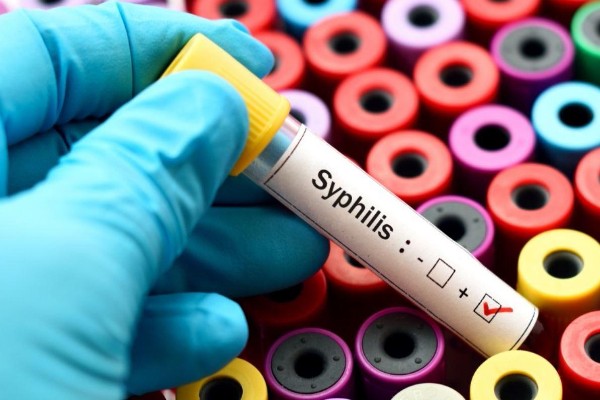 Gay and bi men most at risk as syphilis rates soar
Gay and bi men most at risk as syphilis rates soar
Syphilis has hit its highest level for 70 years, with gay and bisexual men the most affected, according to research by THT and the British Association for Sexual Health and HIV (BASHH).
With the report claiming government spending on sexual health services has been cut by a quarter since 2014, statistics show a new STI is diagnosed every 70 seconds.
Find out more about syphilis symptoms, the three stages of syphilis, how it’s passed on and how it’s treated, here on the THT website
Gay and bisexual men account for 75% of all new cases of syphilis in 2018, according to the THT and BASHH State of the Nation report.
 Other key findings listed by the report include:
Other key findings listed by the report include:
- New diagnoses have increased by 5% in 2018 from 2017.
- Some progress is being made, with declines in rates of STIs such as genital warts – but syphilis and gonorrhoea have increased by 165% and 249% respectively in the past decade.
- There is no current long-term vision for sexual health, including STIs, in England and a national sexual health strategy is urgently needed.
- Men who have sex with men, young people and some ethnic minority communities are among those disproportionately impacted by STIs.
- Current available research does not provide an adequate understanding of the inequalities in sexual health, with little focus on the impact of structural inequalities on STIs. Surveillance data erases the identities of many communities who may be at risk of STIs, resulting in a gap in services that meet their needs.
Download the full report here:
 Jonathan McShane, chair of Terrence Higgins Trust, said: “This report shows that the nation’s sexual health is not in good shape. This must be a wake-up call to the government to take action.”
Jonathan McShane, chair of Terrence Higgins Trust, said: “This report shows that the nation’s sexual health is not in good shape. This must be a wake-up call to the government to take action.”
The report ‘s main recommendation is for a focus on “the need for a timely, fully funded national sexual health and reproductive health strategy.’
It adds: “In order for this strategy to be effective it should take a holistic approach, including a focus on the wider determinants of STIs.
“In tandem with this is the need to fill the gaps in the research which have been identified. Spanning topics of inequalities, access to services, awareness, and behaviours, there’s a need for research that answers the ‘why’ question of STIs.”

















You must be logged in to post a comment.